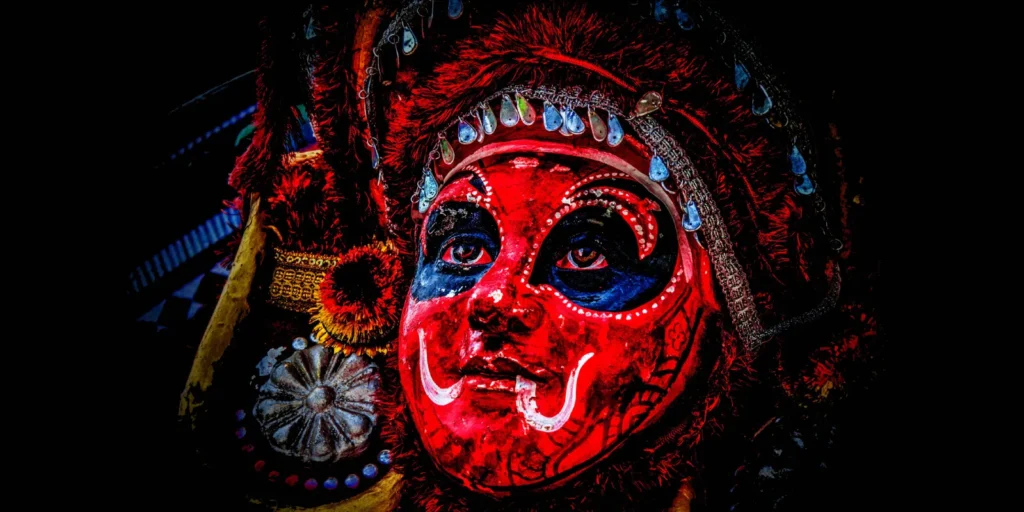

Among the folk dances of Kerala which come under the religious groups the ritual dance staged in Bhagavathi temples or Kavus in propitiation of .the deities deserves special attention. In the erstwhile North Malabar area of which the modern Cannanore District forms the major part this type of dance is called Theyyattam or Theyyam Thullal. The old view which ascribed the origin ofTheyyattam to Devil dance has now been discredited. The current view is that the ancient cult of here worship gave rise to Theyyattam.
Theyyattam literally means the dance of the God, Theyyam being acorruption of the world Daivam or God. It is also known as Tira orTirayattam. A feature of Theyyattam is the use of resplendent costumes and gorgeous colors by the impersonators. This makes it a spectacular pageant that stands out almost unique among the ritual dances of South India.Theyyattam is an exceptionally vigorous dance in which the dancer inarches forward and backward every .now and then to the dismay of the surging crowd of devotees. He dances on one leg at times, raising the right and left leg alternatively. The dancing reaches heights of frenzy and the movements become quicker and quicker as the resounding music produced by the Asuravadyams as-well as by the rhythmic beating of a number of long drums to the accompaniment of Kuzhdls and a large pair of cymbals, creates the proper atmosphere for the dance.



Copyright © 2024 Cochin Cultural Centre. All rights reserved. Designed by eCrystaltech Powered by Divasprik.